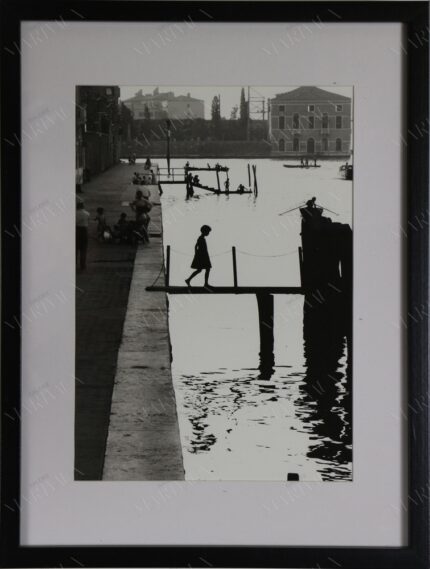Willy Ronis
Willy Ronis (1910–2009) was a French photographer, renowned for his post-war street photography and for being a prominent figure in French humanist photography. Born in Paris to a Jewish family from Eastern Europe, Ronis developed a passion for photography in his early life, a path that would eventually lead him to become one of the most influential photographers of the 20th century.
Ronis’s work captures the essence of Parisian life, much like his contemporaries Henri Cartier-Bresson and Robert Doisneau, yet it is distinguished by its tender portrayal of the working class and its emphasis on social justice. His photographs often depict the everyday life and labor of the Parisian populace, offering a poignant window into the post-war era’s struggles and joys.
One of Ronis’s most famous photographs is “Le Nu Provençal” (The Provençal Nude), taken in 1949, which shows his wife, Marie-Anne, leaning over a sink in a rustic bathroom. This image, celebrated for its candid and intimate portrayal of domestic life, exemplifies Ronis’s ability to find beauty and dignity in the mundane.
Ronis was deeply committed to the values of humanism; his photography goes beyond mere documentation to reflect a genuine affection and respect for his subjects. He believed in using the camera as a tool to highlight the universality of human emotions and conditions, often focusing on moments of joy, affection, and community spirit amidst the backdrop of economic hardship and social change.
Throughout his career, Ronis’s work was featured in numerous exhibitions and publications. He was also a member of the Rapho agency, through which his photographs were distributed worldwide. Beyond street photography, Ronis also excelled in landscape and travel photography, capturing the diverse landscapes and cultures of France.
Even in his later years, Ronis continued to photograph, teach, and exhibit, leaving behind a rich legacy of work that continues to inspire photographers and captivate audiences around the world. His dedication to capturing the beauty of everyday life and his compassionate approach to his subjects have cemented his status as a master of humanist photography.







